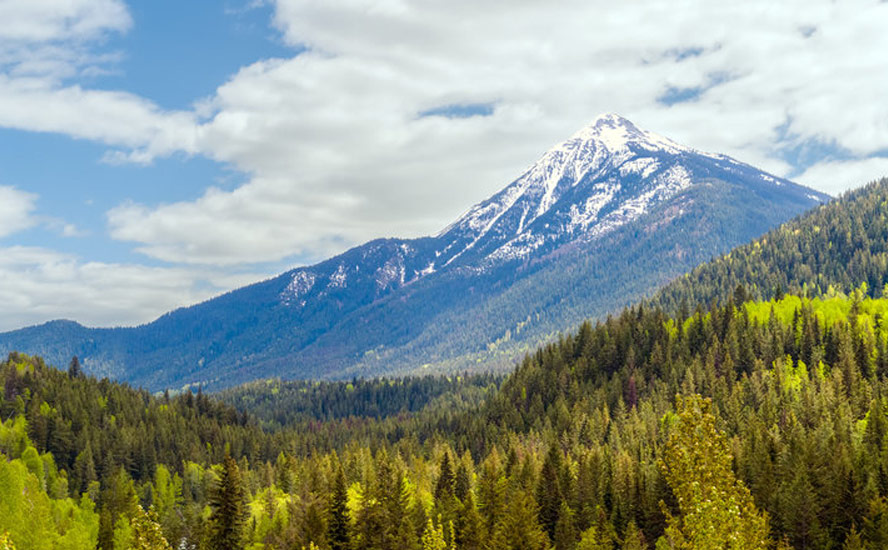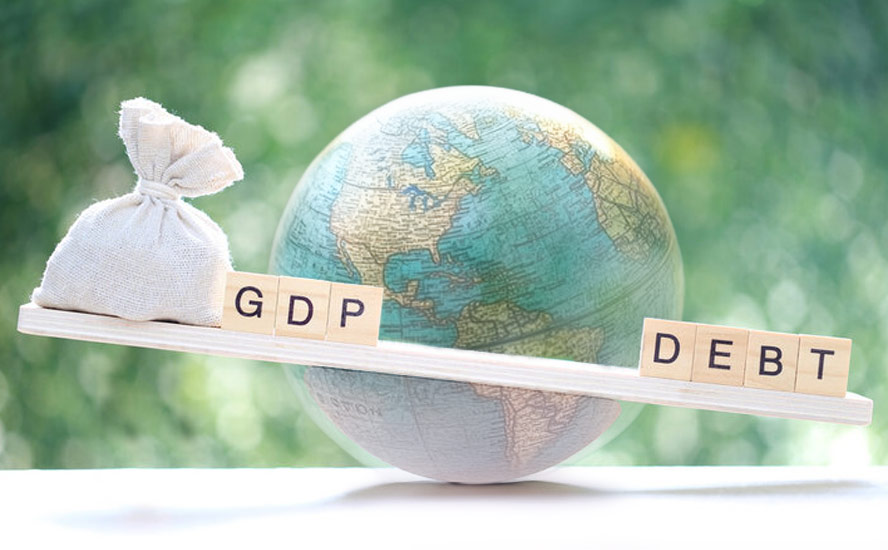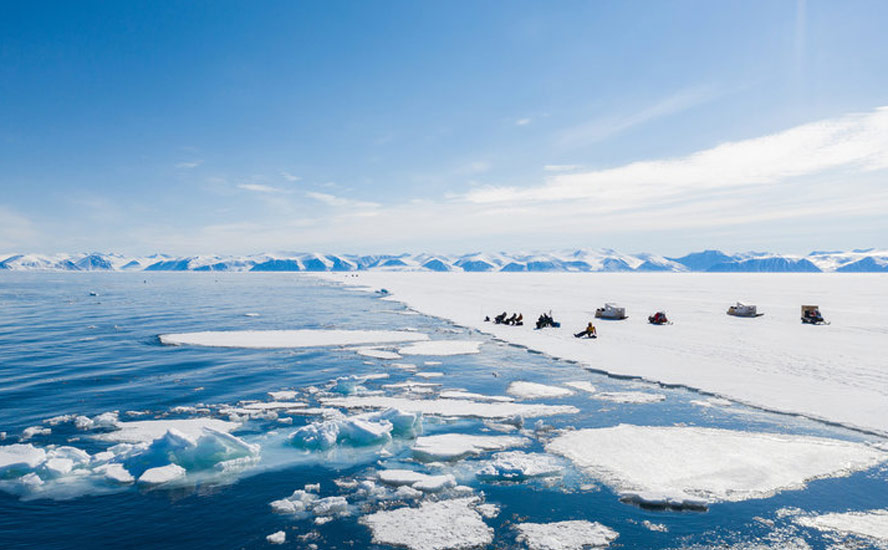BC’s LNG boondoggle continues to lack critics – Richard Mills
2023.04.27
In 2020 British Columbia’s NDP government approved LNG Canada, the first megaproject of its kind to get the green light in this province.
LNG Canada consists of an export plant that cools the natural gas to a liquid using a combination of hydro-electricity and natural gas, states LNG Canada. The pipeline, called Coastal GasLink, is being built and operated by TC Energy. It will extend from the Montney natural gas field in northeastern BC to the LNG terminal in Kitimat. Initially LNG Canada will export LNG from two processing units or “trains” with capacity of 2.1 billion cubic feet of natural gas per day. The plan is to double capacity to four trains, at 5 billion cubic feet per day.
In addition to Shell, the LNG Canada consortium includes Mitsubishi Corp., PetroChina Co. Ltd., Korea Gas Corp. and Petroliam Nasional Bhd.

Billed as the largest private-sector construction project in Canadian history, the now-estimated CAD$40 billion development, including a liquefaction plant, pipeline and gas drilling, isn’t slated for completion until mid-decade. That’s for Phase 1.
But with global demand for natural gas from sources other than Russia accelerating after its 2022 invasion of Ukraine, LNG Canada is weighing whether to build by 2030 a second phase, which would double annual capacity from 14 million tonnes to 28Mt.
In March 2023, the BC government approved a second LNG project, Cedar, also near Kitimat. Like LNG Canada, Cedar would be fed with fracked gas via the Coastal GasLink pipeline, in its case producing 3 million tonnes of LNG annually. The floating LNG facility is a partnership between the Haisla First Nation and Pembina Pipeline Corporation.
There are two other LNG facilities in the works: Woodfibre near Squamish, due to go into operation in 2027 producing an annual 2.1Mt LGN; and Ksi Lisims north of Prince Rupert, a partnership between the Nisga’a First Nation, a group of Western Canadian natural gas producers and Texas energy company Western LNG, that would export 12Mt annually by late 2027 or ’28.
Greenwashing
Despite claims by the operators of all these facilities that they are “clean and green”, the reality is they are anything but.
Not coincidentally, the BC government on the same day it approved the Cedar LNG project, announced a new energy framework for the province requiring all proposed LNG facilities to pass an emissions test with a plan to be “net-zero” by 2030; and a cap for emissions from the oil and gas sector but not for the overall production of oil and gas.
According to the Sierra Club, the latter means that uncounted emissions from burning fossil fuels extracted and exported from BC could continue to grow, even if emissions from new LNG facilities in BC can be reduced.
Also note that already-approved facilities, i.e., LNG Canada and Cedar LNG, will not be required to pass a net-zero emissions test.
We already know that LNG Canada in just the first phase of production would result in 36.4 million tonnes of emissions, which is more than half of British Columbia’s current annual emissions. Cedar LNG would produce quite a bit less, just 7.8Mt, but as The Sierra Club calculates, that is still more than the 6.5Mt generated annually by the city of Vancouver.
Most importantly, the new rules continue to ignore the additional emissions related to fracking, pipelines, shipping and re-gasification, including the leakage of methane, a greenhouse gas that is 86 times more powerful than CO2 over a 20-year period.
According to the province’s 2022 climate change accountability report, BC will fail to meet its climate targets in 2025 and 2030, with the government projecting its 2025 emissions will miss the goal by 15%, in the same year that LNG Canada is slated to start operations.
The LNG industry in BC is countering these negative statistics with a public relations campaign that is being promoted by some mining and oil and gas media, including Resource World magazine.
In a recent article, Resource World touts the ability of liquefied natural gas to displace coal, the dirtiest of fossil fuels, thus propagating the myth that LNG, despite emitting pollutants during the liquefaction process, as well as upstream and downstream (when the gas is produced and when it is used) is relatively clean:
“Natural gas is a transition fuel that can help other nations make the change from coal to cleaner energy while helping to lift populations out of poverty,” Karen Ogen, CEO of the First Nations LNG Alliance, said in a statement.
By displacing coal-fired power in Asia, Canadian LNG can reduce emissions equivalent to taking 41 million cars off Canadian roads.
Oh really? According to BC Green Party leader Sonia Furstenau, Phase 2 emissions from LNG Canada will be the equivalent of putting 1.7 million cars on the road each year, and that LNG Phase 1 made it practically impossible to meet our CleanBC goals. “LNG Phase 2 makes it a pipedream — electrified or not,” The Terrace Standard quoted her saying on Jan. 17. (more on Phase 2 electrification vs natural gas below)
Further down in the article, Pacific Energy president Ratnesh Bedi states, “The Woodfibre LNG project has a critical role to play in demonstrating that British Columbia and its diversified portfolio of energy offerings can contribute to a low-carbon future, both at home and abroad.”
Vouching for Cedar LNG’s green credentials, Haisla Nation Chief Councilor Crystal asserts, “Together with our partner Pembina Pipeline we are setting a new standard for responsible and sustainable energy development that protects the environment and our traditional way of life.”
In describing each project under development, Resource World perpetuates the green lie by stressing each’s promise of carbon neutrality. For example, it says the Ksi Lisims LNG partnership has vowed to reach net-zero emissions within three years of operations starting in 2027 or 2028. The backers of Woodfibre LNG say they have a plan to achieve net-zero by the time their plant starts in 2027. If successful, the article brags, it will be the first LNG plant in the world to achieve net zero, with 14 times fewer emissions than a conventional LNG facility.
What a load of rubbish.
We all need to remember, extracting natural gas through hydraulic fracturing, transporting it to a terminal, and then super-cooling it for shipping in tankers, is not clean energy; in fact it’s as dirty, or dirtier than coal. According to two reliable sources, methane from the production of natural gas makes LNG about as bad a greenhouse gas emitter as coal, and that when it comes to lifecycle GHG emissions, LNG sometimes emits more than coal.
Contrary to the industry’s message, there is also no evidence that LNG exports would reduce coal use around the world. A recent report found that China is building six times more coal plants than other countries.
“The BC government is missing a key point when it comes to recognizing the value of LNG in fighting climate change,” says Matt Horne, BC associate regional director for the Pembina Institute. “Without a global push for low carbon energy sources and efficiency, LNG will likely worsen rather than ease global warming.” (Pacific Institute for Climate Solutions, Oct. 27, 2014)
To turn it into liquid form, the gas must be cooled to 163 degrees below zero. To do that requires a great deal of power, with massive compression units running 24/7. Where does that power come from? In most cases, the same fracked natural gas is used to run the compression units, which defeats the purpose of LNG as “clean”.
According to Wood Mackenzie, LNG will be the biggest source of carbon emission growth by 2025 – due to strong demand from Asian buyers.
Emissions from the first and second phase would represent nearly three-quarters of the province’s legislated target for greenhouse gas emissions in 2050, set at 13 megatonnes/yr.
Opponents say the project will blow the NDP’s goal of cutting GHGs by 40% by 2030 and 80% by 2050, out of the water.
Power limitations
The same NDP approved the Site C dam in late 2017, knowing full well that it would be needed to power LNG Canada and future LNG plants. The budget for this obscene megaproject has doubled to $16 billion.
In fact it is estimated that the first phase alone, of LNG Canada, could use 40% of the power produced by Site C. If the consortium goes ahead with Phase 2, it will consume 80% of the dam’s power.
Given these figures, it’s well worth asking, does the province have enough power capacity for all its future energy needs? Resource Works examined the issue and found that provincial grid capacity is on a collision course with electric vehicle targets and new, expedited net-zero demands for LNG facilities.
Let’s start with LNG Canada saying that it will have to burn natural gas to generate power initially (i.e. in Phase 1), “because the [BC Hydro] transmission infrastructure just isn’t there.”
Yet for LNG export facilities to prove they will be net-zero by 2030, they will need new hydro capacity and transmission lines. It isn’t only LNG Canada that is going to require this new electricity generated by Site C. As Resource Works states, Woodfibre LNG is promising to be the first net-zero emissions LNG export facility in the world through electrification and carbon offsets, FortisBC is planning to expand its Tilbury plant, and Port Edward LNG says its proposed BC plant will be electrified: BC Hydro may soon find itself unable to keep up with electrification demand.
Then there’s the power demands of vehicle electrification. A University of Victoria study quoted by Resource Works found that if BC wants to electrify all road vehicles by 2055, it will need to at least double its power output…
Energy commentator Markham Hislop of Energi Media weighs in: “By 2050, BC may need to double or triple its… power generation as transportation, buildings and industry are all or partially electrified. Current output is generated with 32 hydro dams. Can the province build another 32 or 64 hydro plants in under 30 years? Of course not, so where will all that power come from?”
In the short term,we can expect high greenhouse gas emissions to be generated from LNG Canada. Why? Because until the hundreds of kilometers of new transmission lines are built to reach the province’s remote northwest coast, the facility will be forced to use natural gas turbines, instead of hydroelectricity, to liquify the gas.
As The Terrace Standard explains,
In 2019, the federal government gave LNG Canada $220 million for high energy-efficient gas turbines to minimize greenhouse gas emissions and fuel use at the facility, which LNG Canada has long touted as being the world’s greenest LNG facility when in production…
While phase 1 made use of gas turbines, talks about using hydroelectricity to compress gas into a super-cooled liquid form for export emerged in 2020 after BC Hydro embarked on a feasibility study.
A January 2023 Reuters article states that LNG Canada plans to switch from natural gas-powered turbines to electricity as more renewable power become available, but in the meantime, The terminal, which LNG Canada says would have the lowest emissions intensity in the world, will emit 4 million tonnes of greenhouse gases annually with both phases based on natural gas power.
Air & water pollution
How do we get the natural gas for LNG? We frack it. Most of the conventional natural gas formations in British Columbia have already been depleted. What’s left is “tight gas” trapped in shale rock formations, primarily the Montney in northeastern BC. According to the B.C. Oil and Gas Commission, 88% of BC’s remaining natural gas reserves are unconventional, which involves fracking.
In hydraulic fracturing, a concoction of chemicals, water and frac sand is pumped into a well at high pressure to break apart the shale rock to create fissures that release the natural gas.
Fracking defenders say the process is perfectly safe and contained. The reality is that pollutants are released throughout the process — into the air and water.
Natural gas is mostly methane (CH4), a potent greenhouse gas that is over 25 times more efficient than carbon dioxide at trapping heat in the atmosphere over a 100-year period. The Global Methane Pledge from COP26 acknowledges that methane is one of the most potent greenhouse gases, responsible for a third of current warming from human activities.
Most methane leaks come from flaring excess NG instead of putting it into a pipeline.
Fracking just one well can use 2 to 8 million gallons of water with the major components being water (90%), sand or proppants (8-9.5%), and chemicals (0.5-2%). One 4-million-gallon fracturing operation would use from 80 to 330 tons of chemicals and each well will be fracked numerous times. Many of these chemicals have been linked to cancer, developmental defects, hormone disruption, and other conditions. The water gets contaminated after the fracking process and is disposed of in tailings ponds or is injected into deep underground reservoirs.
Cracked wells and rock movement frequently leak fracking fluid and gases into nearby groundwater supplies. Fracturing fluid leak-off (loss of fracturing fluid from the fracture channel into the surrounding permeable rock) can exceed 70% of injected volume.
Methane concentrations are 17 times higher in drinking-water wells near fracturing sites than in normal wells. Hydraulic fracturing increases the permeability of shale beds, creating new flow paths and enhancing natural flow paths for gas leakage into aquifers.
Fracking has also caused benzene poisoning among pregnant women in northeastern BC – natural gas country – and is known to cause earthquakes (read more below).
In other cases it has depleted water supplies, depriving other users of necessary irrigation or drinking water.
In April 2022, CBC reported on a University of Calgary study that said there may be a link between the density of oil and gas operations and increased health risk for pregnant women and their babies.
The rate of pre-term deliveries — birth before 37 weeks — was found to increase significantly relative to the number of fracturing sites within 10 kilometers of their home.
According to the study, women living near between one and 24 well sites had a 7.4% risk of early delivery, and the risk increased to 11.4% for those near 100 or more fracking operations. Premature births present a number of health risks including neurodevelopmental difficulties, physical disabilities and behaviour problems, including autism, cerebral palsy and epilepsy.
Another study found homes close to fracking sites had higher levels of organic pollutants that may lead to short and long-term health effects.
Here, researchers took water and air samples from the homes of 85 pregnant women in the Peace River area for one week. They found the amount and proximity of natural gas wells to the home were linked to higher levels of certain chemical contaminants… results showed that air samples in homes near the natural gas well sites had higher levels of chemicals used in fracking, such as acetone and chloroform, and those same contaminants were found in their study subjects.
The CBC story quoting the study said BC currently has about 10,000 active wells, and that the area could potentially see a 10-fold increase to more than 100,000 wells.
Residents of northeastern BC experience other negative impacts of nearby natural gas wells. One family living a few kilometers southeast of Dawson Creek reported being bombarded by bright lights, foul smells and high-decibel industrial noise from the work site near the community.
Homeowner Kevin McCleary and his wife say the disruption will likely drive them from their home, which sits on 160 acres. The gas pad is less than half a kilometer from their front door.
Another resident of an 80-acre farm says fracking is “kickboxing its way across the landscape” and destroying her way of life.
Pipeline leaks are another concern.
In January, 2023, residents living about 30 kilometers from Valley View, Alberta, were evacuated due to a leak of natural gas on the Pembina Pipeline Northern Pipeline System. The company estimates about 4,600 cubic meters of NGL vapor was released.
For those hoping the industry activity will slow down, the future reality will likely be quite the opposite. Thousands of people are currently working on building the Coastal GasLink pipeline and LNG Canada’s processing and export facility. For many, the jobs are welcome.

Energy analysts like Tommy Chu say the region needs pipelines to take away all the gas being produced.
“So what LNG Canada is going to provide is much needed relief to access additional markets. Companies have kind of been waiting in the wings. Now, we’ll see a lot more activity,” he told CBC.
Chu said at current prices an estimated $10 million worth of gas a day will flow through Coastal GasLink once LNG Canada is operational.
The B.C. Oil and Gas Commission said drilling for new wells was up 24% in 2021. Petronas, one of the joint venture partners in LNG Canada, said there are “over 15,000 identified drilling locations” in northern BC. (CBC News, April 27, 2022)
Fracking and earthquakes/ dam safety
With fracking, some of the wastewater is pumped underground into waste wells or saline aquifers. There are serious concerns about the ability of these waste wells and aquifers to handle the increased pressure. The evidence is showing that deep-well injecting, and fracking, are linked to the occurrence of earthquakes.
The connection between fracking/ wastewater injection and earthquakes has been strenuously denied by the industry. But a study published in 2016 found that both fracking wells and wastewater disposal wells, drilled near the border between BC and Alberta, could be linked to earthquakes of magnitude 3 or larger.
The need for so much fresh water in the fracking process has resulted in the construction of dozens of unlicensed dams in northeastern BC, some of which may be unsafe.
How vulnerable are the Peace River dams to northeastern BC oil and gas operations? The Canadian Centre for Policy Alternatives has done extensive research on this topic. Among its key findings:
- Earthquakes from fracking occur closer to the surface than natural earthquakes, putting dams and other major infrastructure at risk.
- Ground movement from fracking could alter weak bedrock and change the way water naturally seeps through earth-filled dams.
- At least 92 unauthorized dams have been built in northeastern BC, to be used exclusively by oil and gas companies for the purpose of fracking. Nearly a third were found to have structural problems including a lack of spillways. No companies have been fined for violating the rules.
More recently, researchers tracking 5,757 tiny earthquakes between 2017 and 2019 found the vast majority of them were connected to hydraulic fracturing operations.

Killer whales and LNG
According to The National Post, LNG will bring more marine traffic to BC’s waters than the current Trans Mountain Expansion Project will – about 350 LNG tankers per year compared to 300 oil tankers.
It has long been suspected that engine noise from freighters, cruise ships and other large vessels disturbs cetaceans, the family of marine mammals that includes whales, porpoises and dolphins. A few years ago, researchers found that male humpback whales swimming close to freighters stop “singing” to attract females. They also noticed that the noise from the ships impacted the ability of the whales to navigate and to identify food, a process known as echolocation. Cetaceans use sound to bounce off salmon and other prey in order to locate them.
A similar study was done with killer whales, up the US West Coast as far as Puget Sound.

Noise from the loudest ships was found to be 173 underwater decibels, which equates to around 111 dB in air — around the same level as a loud rock concert.

Note that as the oceans warm due to climate change they become more acidic due to increased CO2 absorption — this change in ocean acidity will allow sounds to travel up to 70% farther underwater. This will increase the amount of noise, further affecting the behavior of marine mammals like killer whales, including their ability to mate.
LNG glut
The business case for British Columbia’s nascent LNG industry is predicated on steady, uplifted demand for liquified natural gas for decades, especially in Asia, the principal destination for BC’s gas.
However the considerable lag time before product becomes available could hurt BC-focused producers. According to The Narwhal, while LNG prices surged in late 2021 due to a shortage, By 2026, when IEEFA expects LNG Canada to be producing at capacity, the company could be facing a glut in the market as new liquefaction facilities in other countries come online over the next few years.
The fact is, British Columbia is late to the LNG game; Australia and the United States already have export terminals up and running. Other big producers include Qatar, Malaysia, Algeria, Russia, Nigeria and Indonesia.

Source: Statista
The Narwhal notes that, while the International Energy Agency forecasts growing demand for natural gas in the coming decades, this doesn’t take into account governmental commitments to bring emissions to net-zero by 2050. The agency therefore concludes that Natural gas demand is forecast to peak this decade, under this scenario, the agency found, and natural gas prices are anticipated to fall.
Much has been made of the potential for Canadian LNG to feed Europe, whose natural gas supply has been cut off from its main supplier, Russia, due to the war in Ukraine.
Proposed facilities include an expansion of the existing Saint John LNG regasification terminal, the Goldboro LNG project in Nova Scotia, and LNG Newfoundland and Labrador. (remember there are no LNG export terminals in Canada apart from the one by LNG Canada under construction in BC)
However according to a 2022 report by The International Institute for Sustainable Development (IISD), via The Financial Post, Canadian LNG is not the answer to Europe’s short-term supply shortage, because it will take years to build and will come on too late to address Europe’s needs.
“Europe is accelerating its plans to reduce gas use by ramping up energy efficiency and the use of renewable sources,” IISD said.
“This will result in a fundamental mismatch with Canadian supply opportunities. Canada cannot ramp up supply before 2025, while Europe’s energy needs will largely be resolved by that time.”
The report also warned that going ahead with new projects could result in stranded assets, as energy efficiency and fuel-switching over the next several years could significantly dent LNG demand in the EU.
The Winnipeg-based think tank warned in 2022 that high NG prices last year may be temporary, driven by a rebounding post-covid economy, cold temperatures, capacity outages and upstream underperformance.
Indeed, after hitting record highs last summer, Asian LNG spot prices slumped to a 21-month low in April. Oilprice.com said the price has lost 82% from the August 2022 pinnacle of $70.50 per MMBtu, when natural gas prices spiked globally as Russia cut pipeline supply to Europe and the EU stocked up on gas for the winter.


While’s China’s historic drop in LNG imports last year is likely to see a recovery in 2023, they are only expected to hit 71 million tonnes. This is 7.4Mt higher than in 2022 but far lower than the 80Mt imported in 2021. Asia’s demand for LNG in 2022 fell 22%.

In its Global LNG Outlook 2023-27, the IEEFA (Institute for Energy Economics and Financial Analysis) says After several years of weak supply growth, IEEFA anticipates that the global LNG market will see a tidal wave of new projects come online starting in mid-2025 [when LNG Canada Phase 1 starts]. The wave will likely crest in 2026, with the addition of 64 million metric tons of annual liquefaction capacity — the most in the history of the global LNG industry. The supply additions will boost global liquefaction capacity by roughly 13% in a single year.
Liquefaction projects targeting in-service after 2026 may be entering a much smaller demand pool than bullish market forecasts anticipate. As new supply floods the market, today’s tight markets may give way to a supply glut, with lower-than-anticipated prices, smaller netbacks, tighter margins, and lower profits for LNG exporters.
Conclusion
It should be obvious from this analysis that the liquified natural gas industry which at one time was touted by Premier Christy Clark as the means by which BC could pay off its debts, is a boondoggle that shouldn’t be given any more oxygen by mining and energy media.
Resource World magazine saying things like natural gas is a transition fuel that will help lift populations out of poverty, and that by displacing coal-fired power in Asia (of which there is no evidence) it will take 41 million cars off of Canadian roads, only serve to justify the lies about LNG being generated by the Canadian oil and gas industry.
The Big Lies perpetuated by Big Oil & Gas
Environmentally, LNG is a disaster. Extracting natural gas through hydraulic fracturing, transporting it to a terminal, and then super-cooling it for shipping in tankers, is not clean energy; in fact it’s as dirty, or dirtier than coal. The future LNG terminal operators say their facilities will be “net-zero” emissions but this relies on the cooling process being done by electricity not natural gas. There currently isn’t the electricity transmission infrastructure in place and it isn’t at all clear whether it will be ready by the time these plants come online mid-decade. And what about the residents of BC? That dam was paid for by our taxes, now we have to watch as 80% (for just the first two phases of one LNG project) of the electricity generated is used to power compressors to feed China and the rest of Asia LNG?
Not only that, natural gas is mostly methane, a greenhouse gas that is 86 times more efficient at trapping heat, when it is allowed to escape into the atmosphere, which it does frequently through flaring.
In BC, the natural gas for LNG will be fracked from unconventional formations, then transported via the Coastal GasLink pipeline to terminals on the northcoast. There is widespread opposition to building this pipeline among indigenous and environmental groups.
Hydraulic fracturing is a highly invasive industrial practice that is driving northeastern BC residents unfortunate enough to live near a fracking site from their homes. Fracking has been proven to cause benzene poisoning and premature births among pregnant women, that can lead to a number of bad health outcomes for the baby such as neurodevelopmental difficulties, physical disabilities and behaviour problems, including autism, cerebral palsy and epilepsy.
Another study found homes close to fracking sites had higher levels of organic pollutant that may lead to short and long-term health effects.
Fracking depletes water supplies, depriving other users of necessary irrigation or drinking water.
The practice of injecting wastewater deep into underground waste wells or saline aquifers at high pressure has been linked to the occurrence of earthquakes. At least 92 unauthorized dams have been built in northeastern BC, to be used exclusively by oil and gas companies for the purpose of fracking. Nearly a third were found to have structural problems.
As the number of LNG projects given the green light by government increases, these problems are only going to get worse.
There are already 10,000 active wells, and the area could potentially see a 10-fold increase to more than 100,000 wells.
The increased ship traffic — an estimated 350 LNG tankers per year — will impede the ability of killer whales and other cetaceans to echolate, diminishing their natural means for finding food or mates, and accelerating the extinction of this majestic species. Why are First Nations involved in building pipelines? Do they not understand what is happening at both end of the pipelines?
Even if the negative environmental impacts of the LNG industry could be accepted — which they can’t — there is a mounting pile of evidence to show that when BC’s LNG plants come online, they will be entering the market at precisely the wrong time. A tidal wave of projects are expected to become operational in 2025 and 2026, adding 64 million tonnes of liquefaction capacity, the most in the industry’s history. At worst, BC’s LNG projects will become stranded assets that no longer make financial sense, as the world transitions to nuclear energy amid strict carbon emissions targets imposed by governments.
New Brunswick nuclear energy vs BC LNG
At best, BC’s LNG projects will still manage to squeak out a profit and provide revenue to the provincial government. The NDP says the LNG Canada project will bring in Cdn$22 billion to BC’s coffers over 40 years.
Yet we’re told US$10m worth of gas per day will flow through the pipeline. That’s US$3.65B a year. Over 40 years US$146.3B. Site C dam cost is already over Cdn$10B (some expect final cost to be $14B), then add Cdn$5.3B in tax breaks for the LNG project.
Sounds like a pretty shitty deal for British Columbians. Subtract a minimum Cdn$15.3B from $22B and there’s not a hell of a lot of new money. And that’s just the financial side, the environmental side is an even bigger loser for British Columbians. BCers don’t get the electricity, instead we get polluted water and air, and we get dead killer whales and other dead cetaceans.
Canadian LNG is not the answer to Europe’s short-term supply shortage, because it will take years to build and will come on too late to address Europe’s needs. LNG is obviously not the answer for China/ Asia for reasons listed above.
Isn’t it about time we recognized the LNG industry for the environmental and economic disaster it has become, and start calling out politicians for their part in supporting it?
Richard (Rick) Mills
aheadoftheherd.com
subscribe to my free newsletter
Legal Notice / Disclaimer
Ahead of the Herd newsletter, aheadoftheherd.com, hereafter known as AOTH.
Please read the entire Disclaimer carefully before you use this website or read the newsletter. If you do not agree to all the AOTH/Richard Mills Disclaimer, do not access/read this website/newsletter/article, or any of its pages. By reading/using this AOTH/Richard Mills website/newsletter/article, and whether you actually read this Disclaimer, you are deemed to have accepted it.
Any AOTH/Richard Mills document is not, and should not be, construed as an offer to sell or the solicitation of an offer to purchase or subscribe for any investment.
AOTH/Richard Mills has based this document on information obtained from sources he believes to be reliable, but which has not been independently verified.
AOTH/Richard Mills makes no guarantee, representation or warranty and accepts no responsibility or liability as to its accuracy or completeness.
Expressions of opinion are those of AOTH/Richard Mills only and are subject to change without notice.
AOTH/Richard Mills assumes no warranty, liability or guarantee for the current relevance, correctness or completeness of any information provided within this Report and will not be held liable for the consequence of reliance upon any opinion or statement contained herein or any omission.
Furthermore, AOTH/Richard Mills assumes no liability for any direct or indirect loss or damage for lost profit, which you may incur as a result of the use and existence of the information provided within this AOTH/Richard Mills Report.
You agree that by reading AOTH/Richard Mills articles, you are acting at your OWN RISK. In no event should AOTH/Richard Mills liable for any direct or indirect trading losses caused by any information contained in AOTH/Richard Mills articles. Information in AOTH/Richard Mills articles is not an offer to sell or a solicitation of an offer to buy any security. AOTH/Richard Mills is not suggesting the transacting of any financial instruments.
Our publications are not a recommendation to buy or sell a security – no information posted on this site is to be considered investment advice or a recommendation to do anything involving finance or money aside from performing your own due diligence and consulting with your personal registered broker/financial advisor.
AOTH/Richard Mills recommends that before investing in any securities, you consult with a professional financial planner or advisor, and that you should conduct a complete and independent investigation before investing in any security after prudent consideration of all pertinent risks. Ahead of the Herd is not a registered broker, dealer, analyst, or advisor. We hold no investment licenses and may not sell, offer to sell, or offer to buy any security.
Legal Notice / Disclaimer
Ahead of the Herd newsletter, aheadoftheherd.com, hereafter known as AOTH.Please read the entire Disclaimer carefully before you use this website or read the newsletter. If you do not agree to all the AOTH/Richard Mills Disclaimer, do not access/read this website/newsletter/article, or any of its pages. By reading/using this AOTH/Richard Mills website/newsletter/article, and whether you actually read this Disclaimer, you are deemed to have accepted it.




























